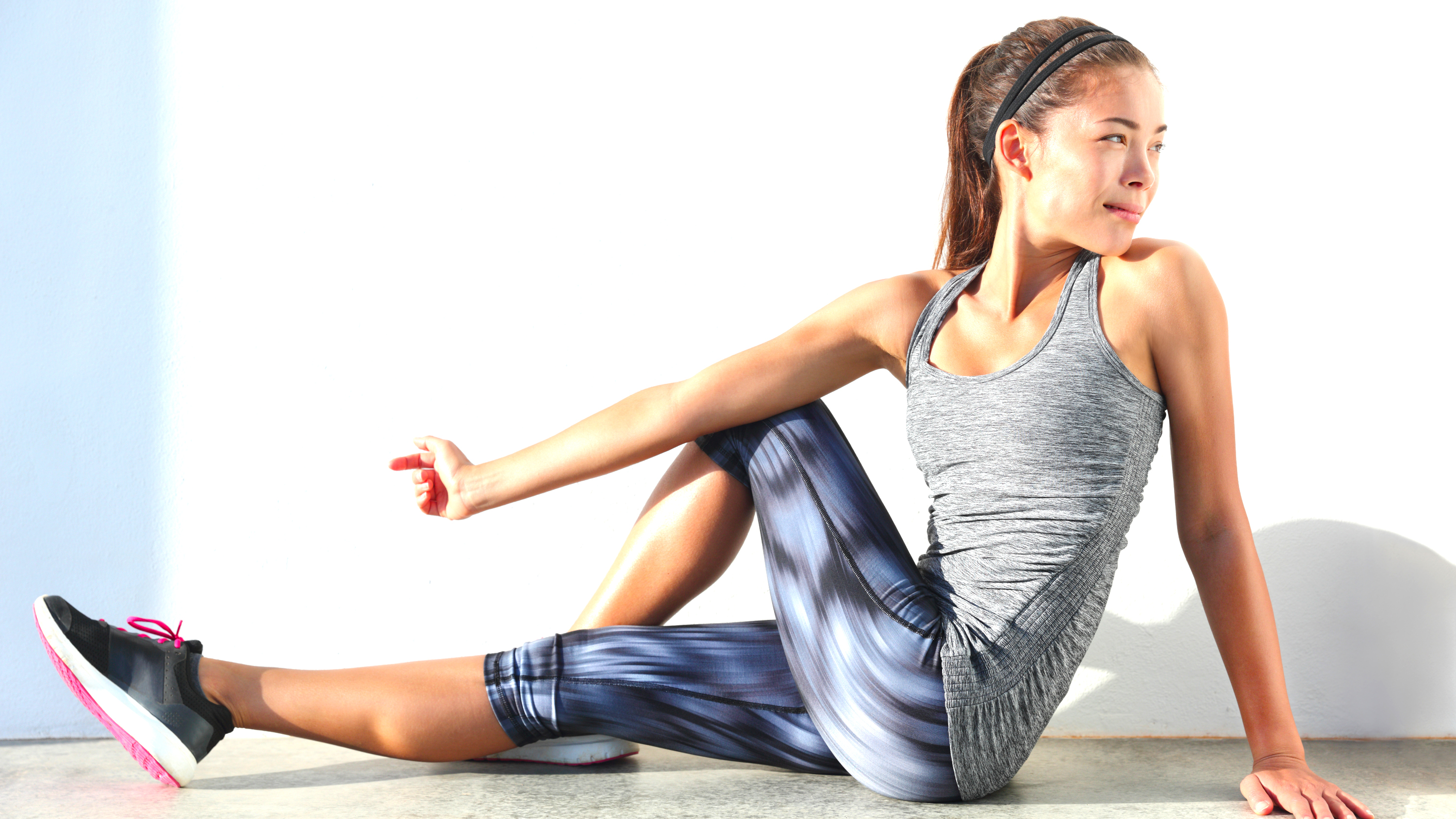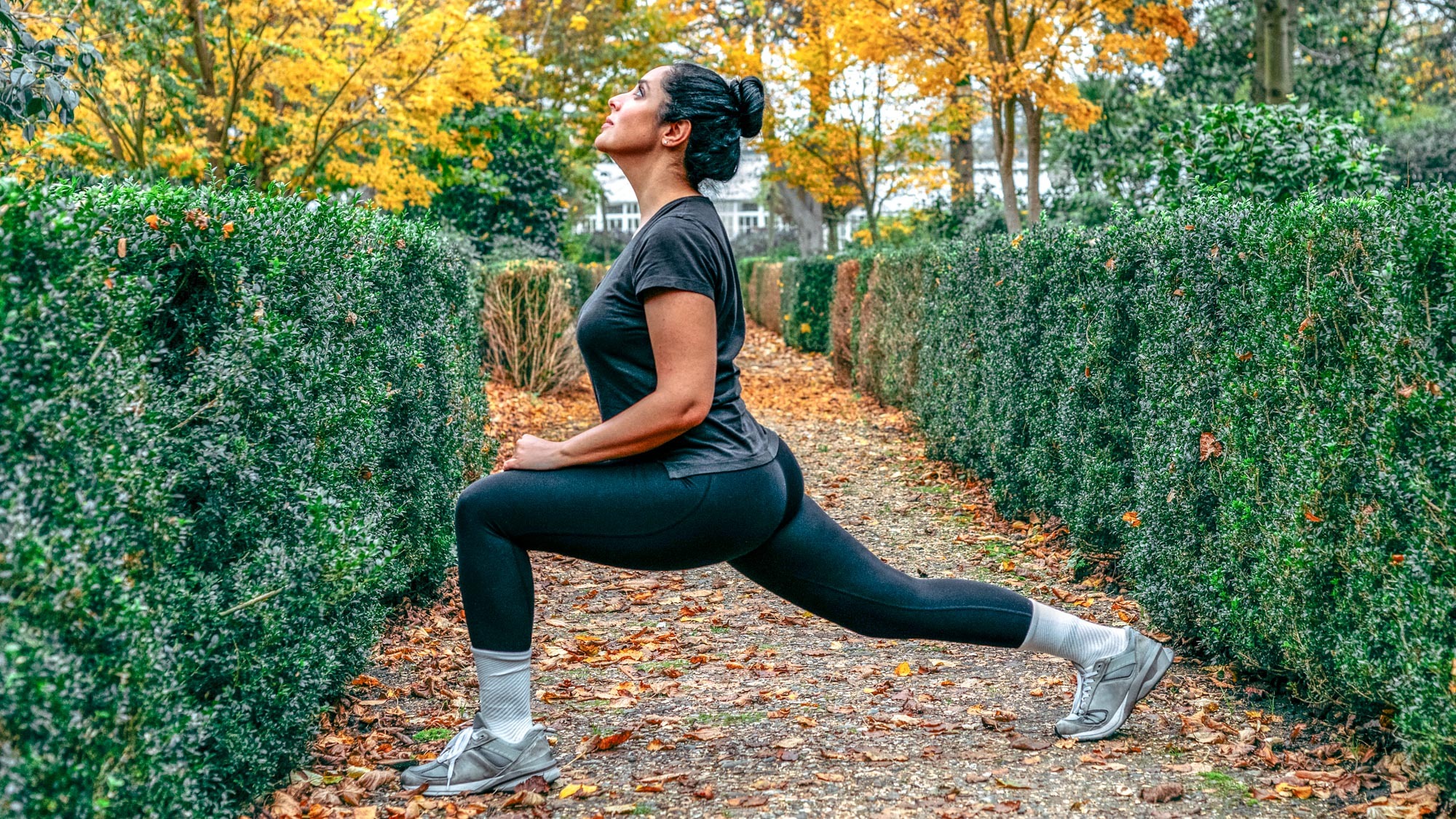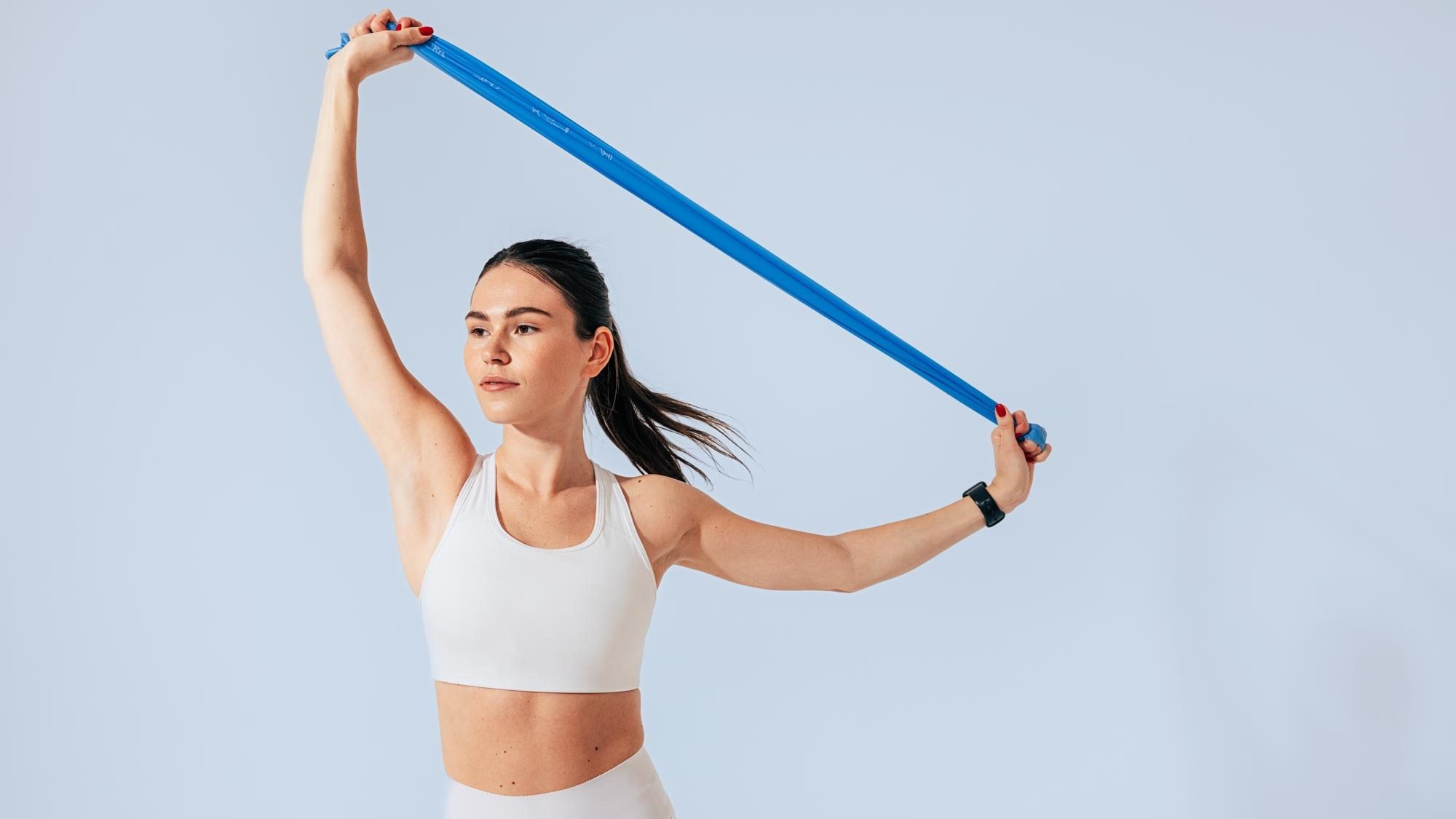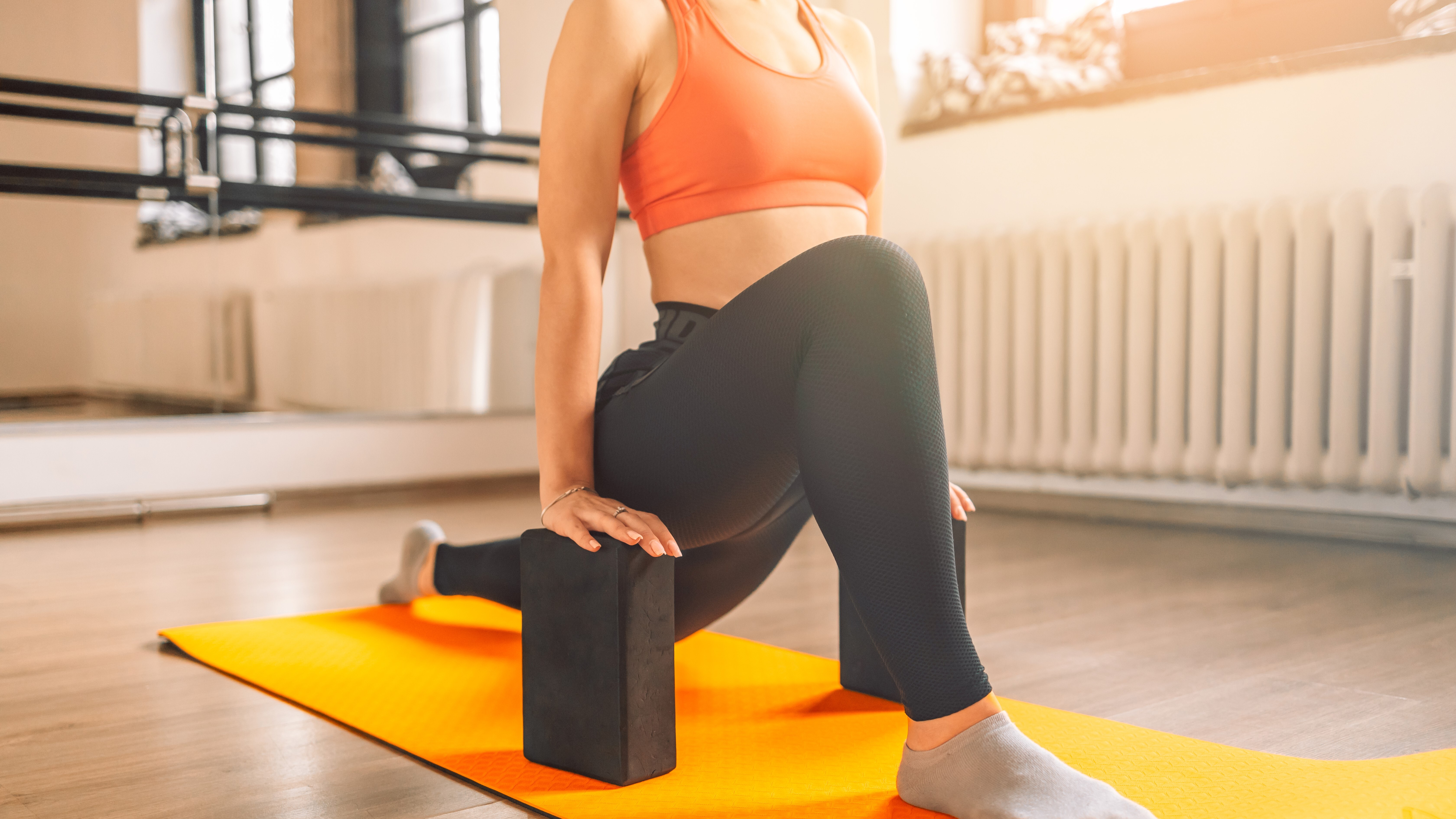
Stretching and mobility are terms used interchangeably to describe the activities you’d perform during warm-ups and cool-downs to prepare the muscles and joints for exercise or promote recovery. But are they the same? The short answer is, no.
“Stretching” takes some defining. Static stretching refers to holding a stretch to improve muscle flexibility and offer a short-term boost in range of motion, but you can also perform active stretches.
Mobility refers to moving joints through a range of motion and your ability to do so dynamically, using strength and control. Think of touching your toes for 30 seconds versus performing hip swings or shoulder rolls. Think deadhangs versus kipping (one for the CrossFitters).
Below, I cover the key differences between mobility, stretching, range of motion, and flexibility, what each term really means, the benefits, drawbacks and how to incorporate them into your exercise routine. Grab one of the best massage guns to assist with your stretches, and read on.
Stretching vs mobility: What’s the difference?

Stretching primarily promotes flexibility — muscles can be tight or flexible and more tolerant to stretching, depending on how naturally flexible you are and how often you stretch.
Stretches tend to be performed for 30 seconds or more, and during static stretches, muscles can relax and lengthen. Performed in a relaxed position (relaxing the muscles while someone externally applies pressure) can be referred to as passive stretching. Although the effects of static stretching are mostly short-term, regular stretching has benefits.
Active stretching can include PNF stretching (which I cover below), ballistic stretching, which means performing rapid-fire bouncing movements at your end range of motion (no longer taught or recommended) and some mobility exercises.
Sign up to get the BEST of Tom's Guide direct to your inbox.
Get instant access to breaking news, the hottest reviews, great deals and helpful tips.
Then there are acute and chronic stretches: Acute stretching creates short-term benefits, like preparing you for exercise or recovery post-workout; chronic stretching creates long-term benefits, which happens when performing them regularly, increasing stretch tolerance. That’s why many athletes and sportspeople can access range of motion and flexibility more readily.

Mobility drills are always dynamic and tap into flexibility and strength, helping to increase the range of motion around your joints while actively working them to their end range.
Mobility training will help you achieve a greater range of motion, remaining strong and controlled while performing movement. This must also be performed regularly for best results, using sets and reps rather than a specified time. Here are 3 mobility exercises I swear by to get you started.
Depending on the purpose, you’ll choose mobility over static stretching, and vice versa.
The more flexible and mobile you are, the better your exercise performance and daily functioning can be, like running faster, achieving a deeper squat, throwing further, or executing technical lifts with better positioning and control. Imagine trying to shelf a heavy barbell overhead if you have tight shoulders, for example.
In particular, mobility will improve stability, strength and control over a movement, help prevent injury and maintain joint health.
When I first started exercising, I couldn’t distinguish between the two. Only over many years of workouts and qualifying as an instructor have I learned the true benefits of stretching — active, static, or passive — and mobility, the unique differences, and how to utilize both the most effectively for exercise, recovery, performance and injury prevention.
3 things I wish I had known about stretching and mobility when I started working out
Here are a few helpful tips I’ve picked up along the way — from trainer to client.
1. Stretching and mobility training shouldn’t be used interchangeably

Both are beneficial for the body, but the rule of thumb and current research suggest mobility drills and dynamic stretches are best for warm-ups, preparing the muscles, joints and bones for exercise, and movements should be specific to the muscle groups and types of exercises you plan to do.
For example, before a lower body squat program, I might move clients through a series of bodyweight squats, candlestick rolls, inchworms and other exercises that move the hips, knees and ankles through a range of motion and target the lower body muscles used for the squat.
Save static or passive stretching for cool-downs and as a recovery modality after the muscles are warm. Evidence — like this study — suggests that held stretches before a workout could even negatively impact high-intensity exercise performance. A stretching routine afterward could help build flexibility, though the immediate benefits are short-lived.
Stretching regularly at the end of your exercise routine can help train your muscle’s resistance to the stretch reflex — a built-in reflex system that prevents muscles from overlengthening, contracting the muscle in response to fast change. The system is there to protect you, but training the stretch reflex will help you develop more flexibility in your muscles.
2. The research on static stretching isn’t as promising as we once thought — but one type is
We’ve always been told static stretching is paramount to injury prevention, relieving tight muscles, removing lactic acid, reducing DOMS (Delayed Onset Muscle Soreness) and improving overall recovery. Some pretty bold claims about the efficacy of static stretching remain unfounded.
However, research published in the International Journal of Sports Physical Therapy suggests a stretching routine can improve flexibility, although the type of stretching you do matters more for range of motion.
PNF stretching (Proprioceptive Neuromuscular Facilitation) could boost flexibility, range of motion, flexibility and performance; this assisted stretching style stretches and contracts muscles with one person applying pressure to another person’s muscles. It proves very effective, and without a partner, you could use one of the best resistance bands instead.
When you stretch, the inverse myotatic reflex, also known as autogenic inhibition, is initiated (a response to a held stretch). To protect you, the brain tells your muscles to relax, helping to deepen a stretch.
This can happen because of another built-in system called the Golgi Tendon Organ (GTO), which kicks in during a held stretch, communicating with your brain to override the stretch reflex and allow muscle spindles to relax, indicating to your body that it’s safe.
Training this system improves movement efficiency, muscle engagement and more resilient but pliable muscles. There are a few main types of PNF stretching worth knowing:
- Contract-Relax (CR):
The person being stretched will isometrically contract (that means without moving) the tight muscle group during the stretch and hold for around 10 seconds while being assisted by resistance from the trainer, then release. A new range of motion will be identified, and the process repeated, increasing the range each time.
Think of a hamstring stretch lying on your back with the leg in the air; the hamstrings will be held under contraction.
- Agonist-Contract (AC):
This time, the person will contract the opposing muscle group during the same stretch. Release, reset and repeat.
For example, imagine the same hamstring stretch with the leg in the air. If the hamstrings are tight, this will inhibit knee extension, so the quad becomes the agonist (target) muscle group and the hamstring will become the opposing muscle group (called the antagonist). The person will now contract the quad, allowing the antagonist (in this case, the hamstrings) to relax; this is called reciprocal inhibition.
- CRAC:
A mix of the above. The person will contract the primary muscle (in this case, the hamstring), hold for 10 seconds, release, then contract the opposing muscle (in this case, the quad), hold and release. You'll then find the new range of motion and repeat.
3. Both have a place in your lifestyle — and can even be relaxing

Combining stretching and mobility should build flexibility and range in and around the muscles and joints, helping you move better while building stronger, pliable, responsive and robust muscles. This also improves stability, strength and control.
To make long-term improvements, include a mix of mobility, stretching and strength work in your weekly exercise routine, adding tools like resistance bands and the best foam rollers. If you don’t enjoy doing this alone, consider a Pilates or yoga class to help you get started.
Though considered boring for some, it’s a really great way to relax, combining breathing exercises with mindful movement. According to PLOS ONE, a consistent yin yoga program consisting of slow practice and held stretches can relieve stress and anxiety, partially because of meditative breathwork.
Breathing exercises help shift the body from the sympathetic nervous system to the parasympathetic nervous system, which means from a state of "on" or stress to a state of "off" and repair. The result? A calmer mind, reduced anxiety and feelings of relaxation.
Lululemon double foam roller @ Lululemon
This is the best foam roller listed in our guide and one of the most versatile foam rollers on the market. Tough to treat muscles? No problem, trust us.
Bottom line
In daily life, flexibility and mobility walk hand in hand; static or passive stretching improves the flexibility of muscles but doesn’t directly influence a range of motion and limited range will also limit how much flexibility you can develop, so you’ll need to consider both to help you function optimally.
Strength training can also improve mobility and vice versa. Loading your joints while performing any range of motion improves neuromuscular pathways and the quality of your movement patterns, positively impacting flexibility, mobility and the strength of the muscles and joints.
But how often should you train? At least two strength sessions per week can elicit positive changes, alongside warm-ups and cool-downs before and after every workout you do.
A standalone mobility or stretching session several times a week is also beneficial. Still, the frequency, duration, type and intensity of exercises will depend on your goals, lifestyle and biological markers. I guarantee spending more time on your mat trying out mobility and stretching will help prevent injury and keep you safer, more active and nimble in the gym, even as you age.
More from Tom's Guide
Learn more about the benefits of stretching and mobility.
- The 5 components of physical fitness you need to know
- 5 stretching mistakes you're probably making
- I’m a personal trainer — I think this one hip flexor stretch is better than pigeon pose for releasing lower body tension

Sam Hopes is a level 3 qualified trainer, level 2 reiki practitioner and senior fitness writer at Tom's Guide. She is also currently undertaking her Yoga For Athletes training course. Sam has written for various fitness brands and websites over the years and has experience across brands at Future such as Live Science, Fit&Well, Coach, and T3.
Having worked with fitness studios like F45 and Virgin Active, Sam now primarily teaches outdoor bootcamps, bodyweight, calisthenics and kettlebells. She also coaches mobility and stretching-focused classes several times a week and believes that true strength comes from a holistic approach to training your body.
Sam has completed two mixed doubles Hyrox competitions in London and the Netherlands and finished her first doubles attempt in 1:11.









